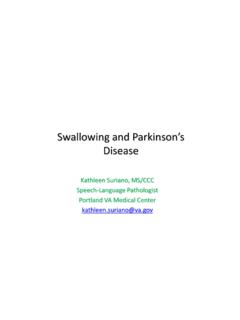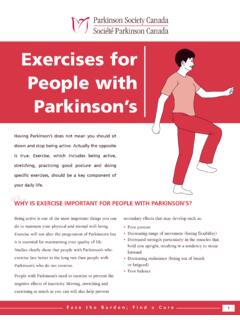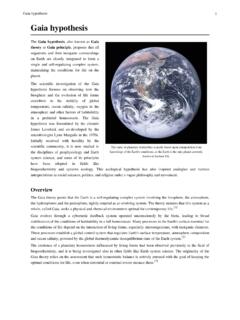Transcription of Intracranial Mass Lesions and Elevated Intracranial Pressure
1 Intracranial mass Lesions and Elevated Intracranial Pressure Lissa C. Baird, MD Assistant Professor Directory, Pediatric Surgical Neuro-Oncology Department of Neurological Surgery Oregon Health & Science University Conflict of Interest Disclosure Disclosure I do not have any financial relationships to disclose. I. General Principles of Intracranial mass Lesions Intracranial mass Lesions Overview I. General Principles of Intracranial mass Lesions II. Differential Diagnosis III. Signs and Symptoms IV. Clinical Management of mass Lesions and Elevated Intracranial Pressure 1 Intra-axial vs Extra-axial Intrinsic to the brain Metastatic tumor Extrinsic to the brain meningioma What is an Intracranial mass lesion ?
2 Space-occupying lesion Recognizable volume Abnormal May c ause mass effectMass Effect = compression of surrounding structures causes shift (displacement) May c ause elevation of Intracranial pressureDescription of Intracranial mass Lesions Intra-axial Extra-axial +/- mass effect Discrete lesion Expansion of In trinsic anatomy 2 Is there mass Effect on surrounding brain structures? Epidural hematoma Pineal cyst Discrete lesion or Expansion of Intrinsic Anatomy? Intraparenchymalhemorrhage tumor Trapped Temporal horn Diffuse intrinsic pontine glioma II.
3 Differential Diagnosis Neoplasm Trauma Infection Stroke Cyst Vascular Hydrocephalus Congenital Anomaly 3 Neoplastic mass Lesions Intra-axial Benign Slow rate of growth Unlikely to metastasize Less surrounding edema Can still cause significant symptoms depending on location Neoplastic mass Lesions Intra-axial Malignant Metastatic May be multifocal Spread within central nervous system Infiltrate normal brain Severe Edema Neoplastic mass Lesions Extra-axial Most are benign Symptoms focally re lat4 Traumatic mass Lesions Hematoma Depressed S kull Fractures Foreign Body Penetrating injuries Layers of the Cranial Vault Subgaleal hematoma Between galea aponeurotica and periosteum.
4 Blunt trauma boggy No surgery Neonate--volume5 Cephalohematoma Between the periosteum andthe skull Do not cross suture lines No interventionEpidural Hematoma Between cranium and dura Convex shape Arterial bleeding Expand rapidly Emergent SurgicalEvacuationSubdural hematoma Hemorrhage in the dura-arachnoid space Bridging veins Shear i njury, rotational acceleration Concave shape Higher mortality High association with other underlying brain Lesions Surgery: Acute presentation = emergent surgery Subacute/Chronic presentation = urgent to semi-elective surgery 6 Subarachnoid Hemorrhage Between arachnoid and pia Most common traumatic bleed Rupture of small vessels on the surface ofbrain Usually trivial mass ef fect Not SurgicalIntraparenchymal Hematoma Often delayed up to 72 hours.
5 High association with hematomas in otherintracranial locations. Surgery is usually urgent (not emergent) ifnecessaryCerebral Contusions Bruising of neuralparenchyma Classically described asCoup and Contrecoup Loss of Consciousness7 Coup Contracoup Injury Coup: Injury occurs under s ite of i mpact/blunt trauma Contra-coup Injury occurs opposite site of impact/blunt trauma mass Lesions from Infection Cerebral Abscess Subdural Empyema Epidural Abscess Neurological presentation and type of infection determines surgical urgency 8 Cerebral Abscess Predisposing Conditions.
6 Otitis Med ia/mastoiditis Sinusitis Dental Infection Penetrating Trauma Pulmonary Infection Endocarditis Immunocompromise Cerebral Abscess Days 1 -4: early cerebritis Days 4 -9: late cerebritis Days 1 0-13: Early capsule formation Day 14 and later: Late capsule formation Meningitis Ventriculitis Cerebral Abscess Symptoms: Headache Fever Focal neurologic deficits Altered mental status Seizures Nausea and Vomiting Nuchal rigidity Papilledema Surgical resection or aspiration (~ cm) Antibiotics Mortality: 8-25% Neurological Sequelae: 20-70% 9 Subdural Empyema Predisposing Conditions: Sinusitis Otitis m edia/mastoiditis Skull trauma Neurosurgical procedures Pulmonary Infections Meningitis Subdural Empyema Rapidly progressive Symptoms: Fever Headache Vomiting Seizures Altered Mental Status Neurological Deficits Coma Surgical Emergency Antibiotics Epidural Abscess May be associated w ith subdural empyema Similar pathogenesis Post-neurosurgical.
7 Bone at risk Less m orbid than subdural 10 mass Lesions from Infection Encephalitis Parasite neurocysticercosis HSV encephalitis Stroke Ischemic Hemorrhagic Cysts Chronic presentation Incidental Congenital Arachnoid cysts 11 Cysts May be asymptomatic Headaches Endocrinopathies Papilledema Focal deficits r are Colloid Cyst Rathke s Cleft Cyst Cysts Incidental Asymptomatic Usually observation only Pineal Cyst Vascular mass Lesions Aneurysm Arteriovenous malformations Cavernous malformation 12 Vascular mass Lesions Headache Cranial neuropathies Seizure Vascular steal deficits Asymptomatic Hemorrhage Vasospasm/Stroke Hydrocephalus Vascular mass Lesions Arteriovenous Malformations Seizures Vascular steal Venous h ypertension Hemorrhage Vascular mass Lesions Cavernomas Seizure Hemorrhage Low Pressure 13 Hydrocephalus Communicating Post-hemorrhagic Post-infectious Obstructive Aqueductal stenosis Trapped v entricle Congenital Anomalies Lipoma Hamartoma seizures Tubers Tuberous sclerosis Seizure focus Incidental III.
8 Signs and Symptoms Focal Global Herniation Syndromes 14 mass Lesions : Does BIG = BAD? Not n ecessarily Growth rate of a mass is the most critical variable Chronic vs acute development of ma ss effect Benign = growth rate is 0 Life-threatening = can be massive lesion in seconds However: Location also important A 1 cm mass lesion may cause devastating symptoms in the brain stem and no symptoms in the frontal lobe Headache Not a n emergency Confused Vomiting Anisicoria Emergency Focal Symptoms Cortical Ablative = negative signs Loss of cortical function Irritative = positive signs Seizures Subcortical Interruption of tracts Interruption of fasciculi 15 Focal Effects Frontal Lobe Personality changes Memory difficulties Cognitive difficulties Bladder incontinence Motor Temporal Lobe Dysphasias
9 Memory difficulties Seizures Focal Effects Parietal Lobe Neglect syndroms Agnosia, astereognosia, dyslexia, dysgraphia, dyscalculia Sensory disturbance Occipital Lobe Cortical blindness Visual field deficit Anton s syndrome Focal Effects Midbrain Parinaud Syndrome: Light near dissociation (- light, +accommodation) Upward gaze palsy Retraction nystagmus Pontine Periodic breathing Pinpoint pupils Absent oculovestibular reflexes Quadriparesis Medulla Downbeat nystagmus Apnea Brainstem or Cranial Nerve: Cranial neuropathies 16 Focal Effects Sellar/Suprasellar Endocrinopathies Hypothalamic dysfunction Visual field cut Cerebellum Ataxia Fine motor dysfunction Dysmetria Nystagmus mass Lesions : Global/Distal Effects Elevated Intracranial Pressure Herniation Syndromes Uncal Subfalcine Acute Subacte Chronic Trans-tentorial Tonsillar mass Lesions .
10 Global Effects Acute Elevation of In tracranial Pressure Headache Vomiting Seizure Focal neurologic deficits Altered mental s tatus Depressed level of consciousness Bradycardia Hypertension Death 17 mass Lesions : Global Effects Sub-Acute Elevation of Intracranial Pressure Headache Vomiting Lethargy Focal neurologic deficits Cranial neuropathies (CN III, CN VI) Seizure Behavioral Changes Papilledema Blurry vision Gait disturbance Altered mental status Depressed level of consciousness Death mass Lesions : Global Effects Chronic Elevation of In tracranial Pressure Asymptomatic Headache Vomiting Papilledema Blurry vision Behavioral Changes Gait disturbance Seizure Lethargy Herniation Syndromes: Uncal Herniation Middle fossa Lesions Uncus of mesial temporal lobe herniates overtentorial incisura18 Herniation Syndromes: Uncal Herniation Pupillary Fixed, dilated pupil Ptosis CN III palsy ( Down and out ) Corticospinal Contralateral motor signs i








